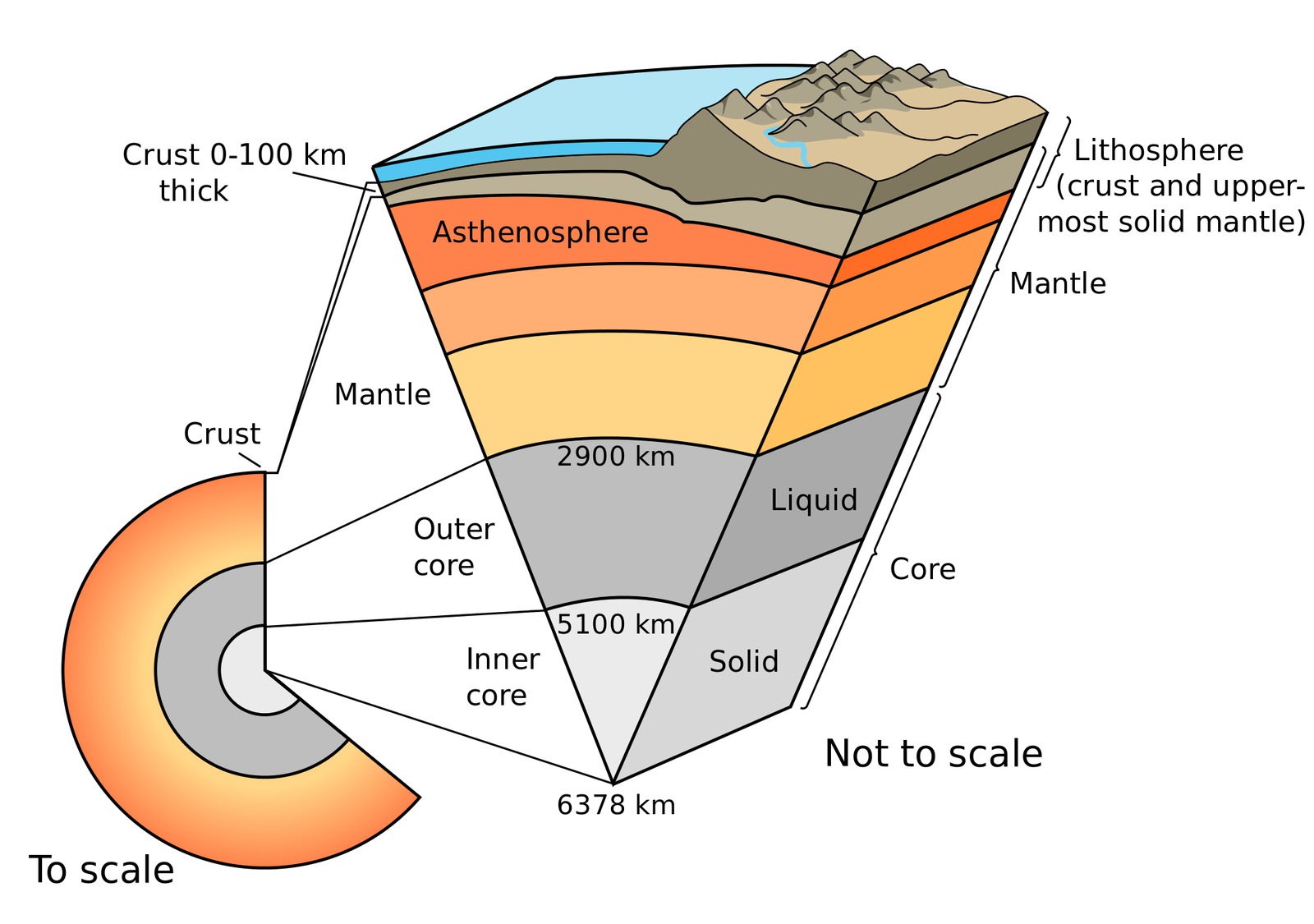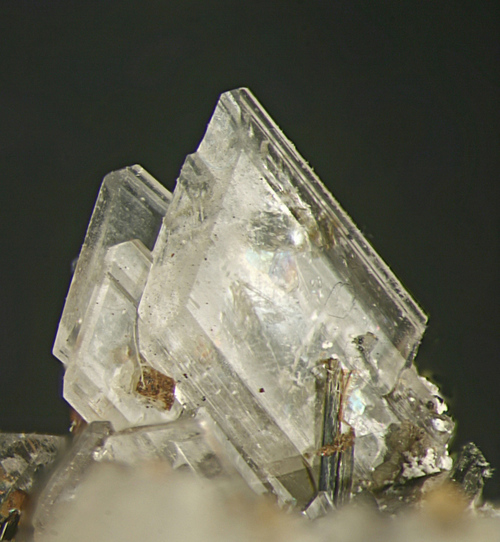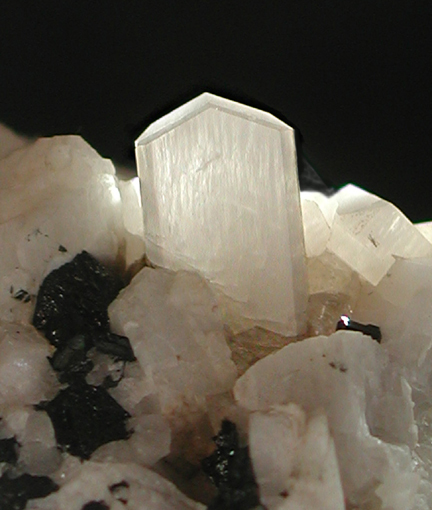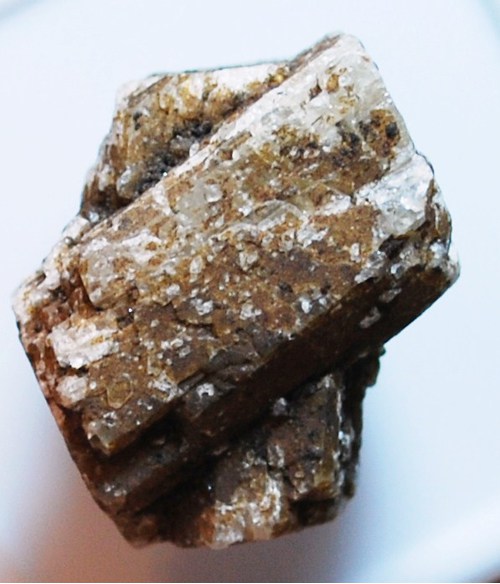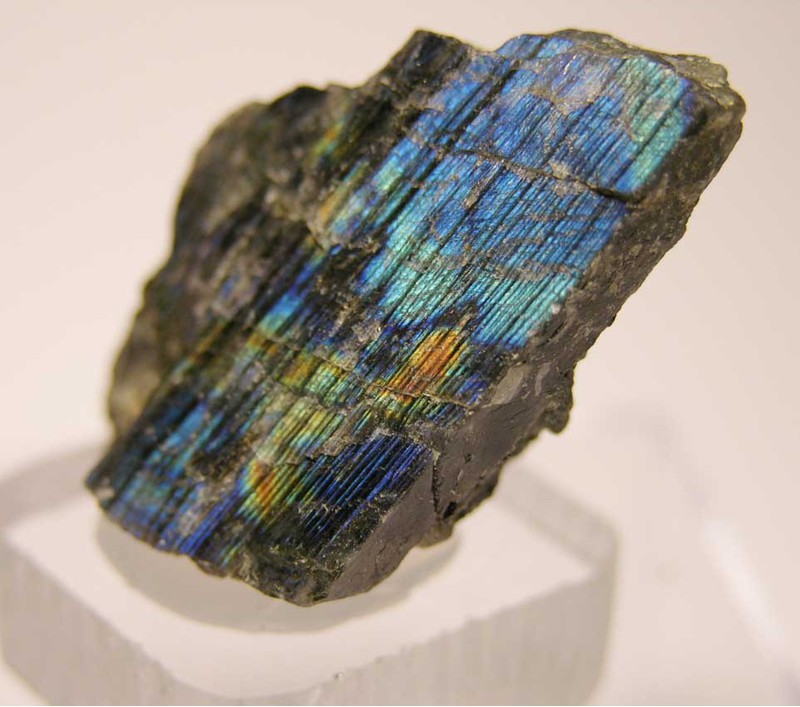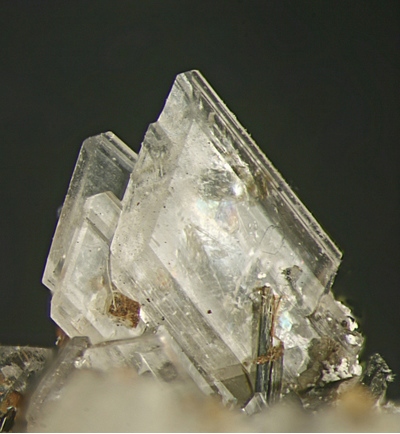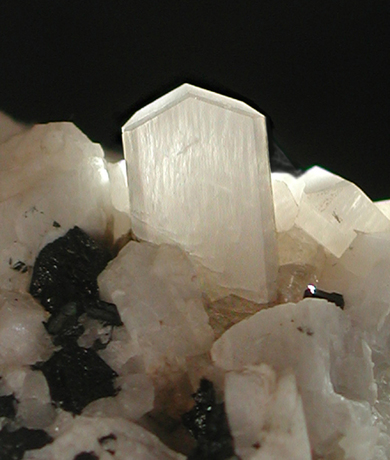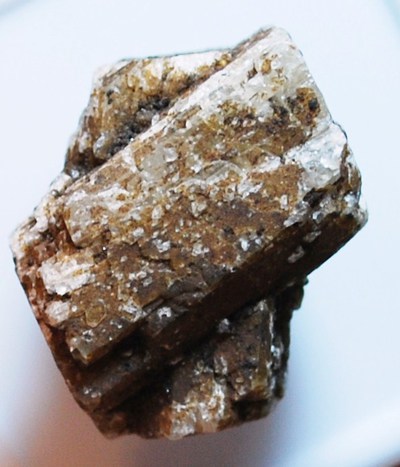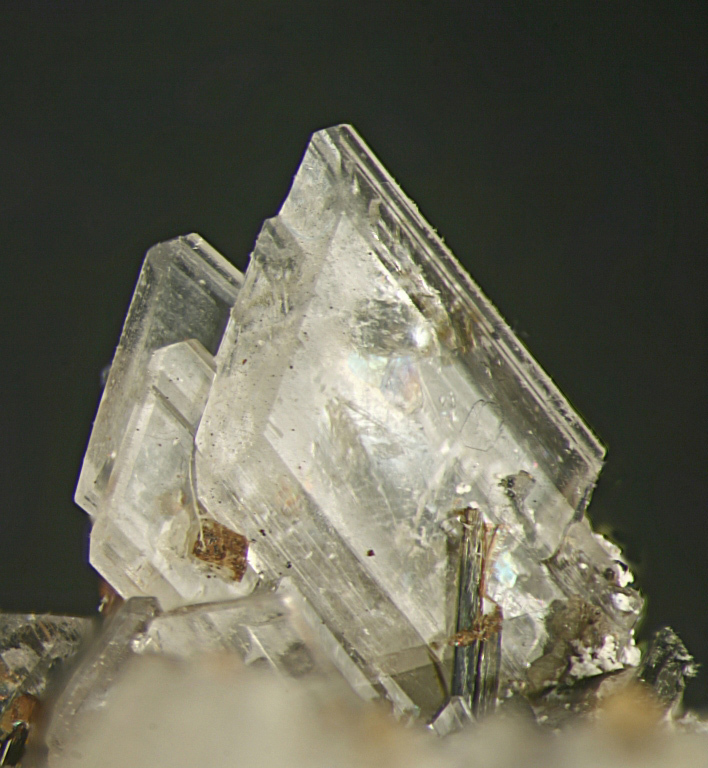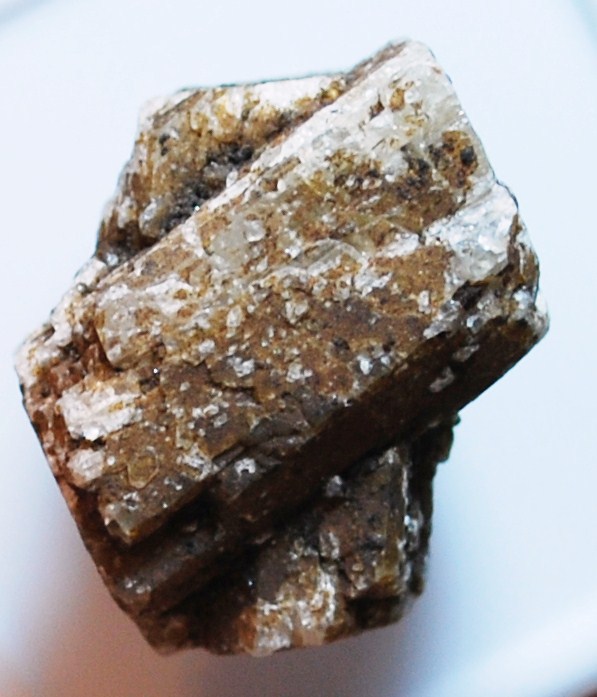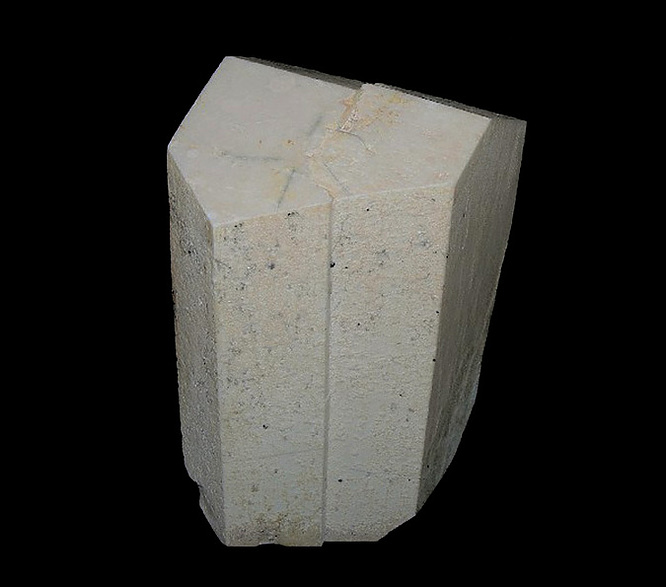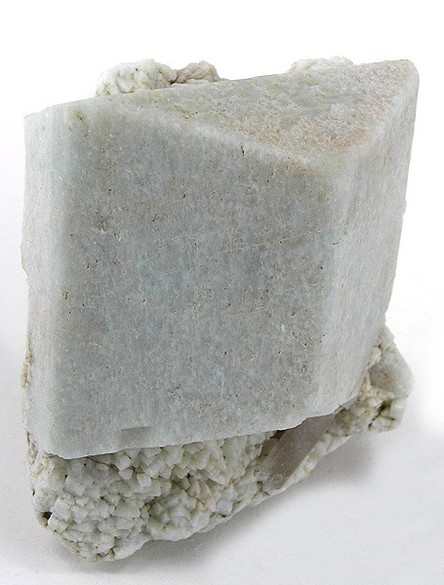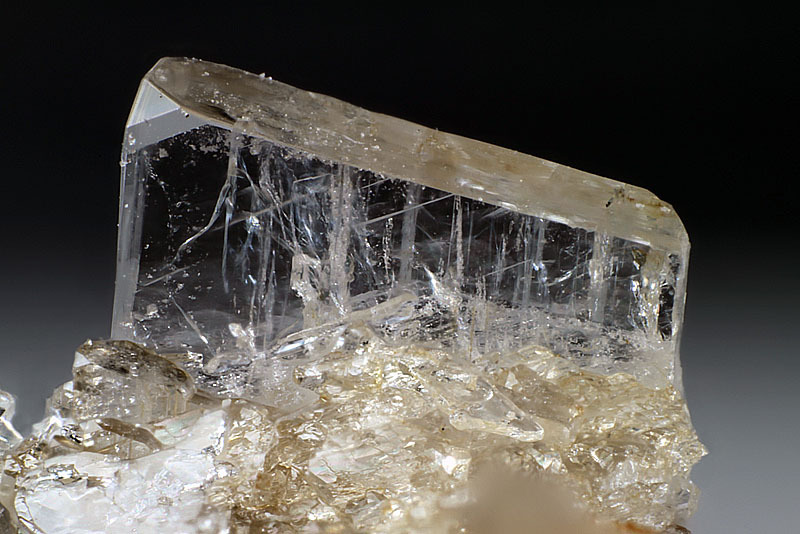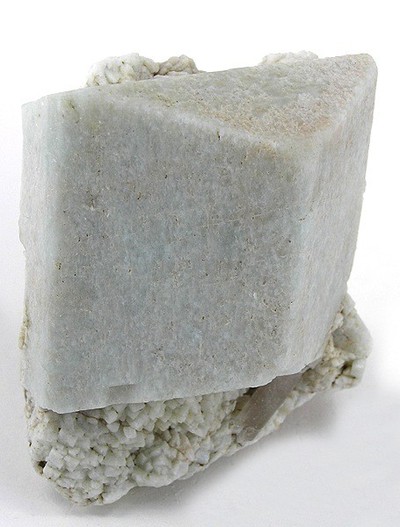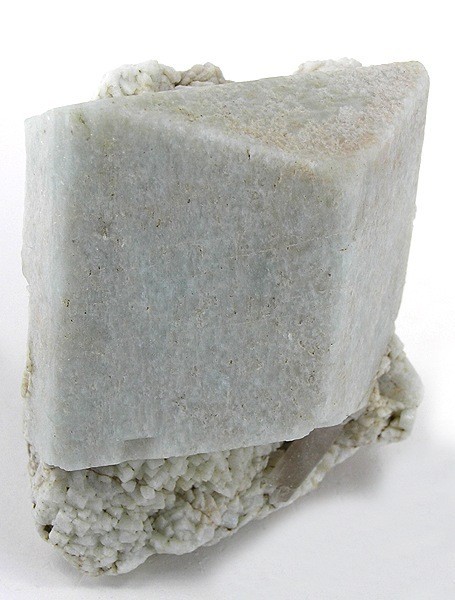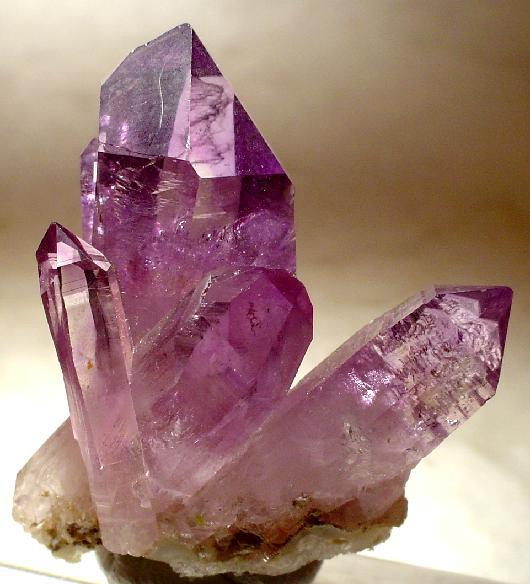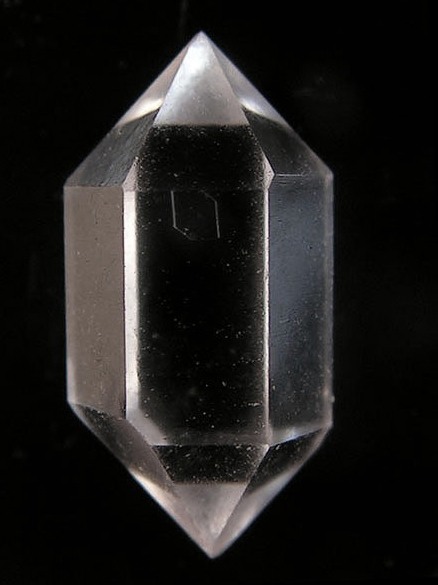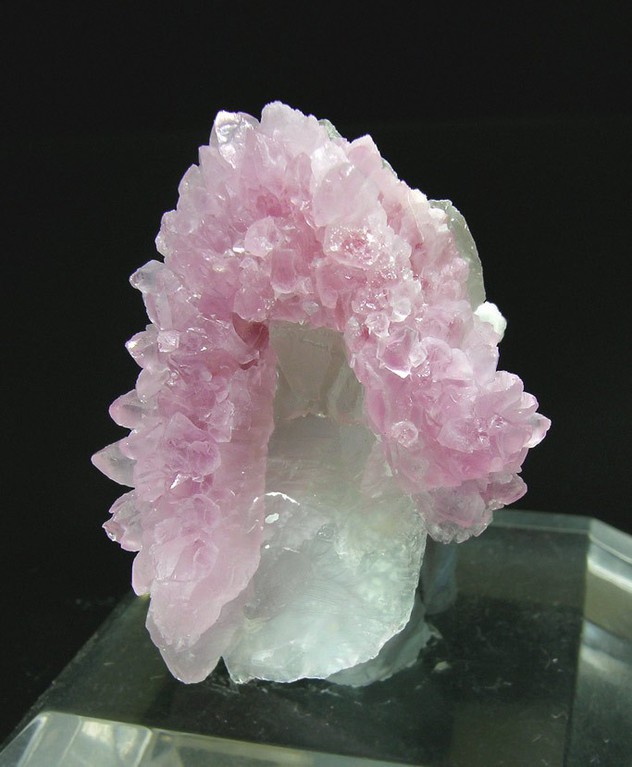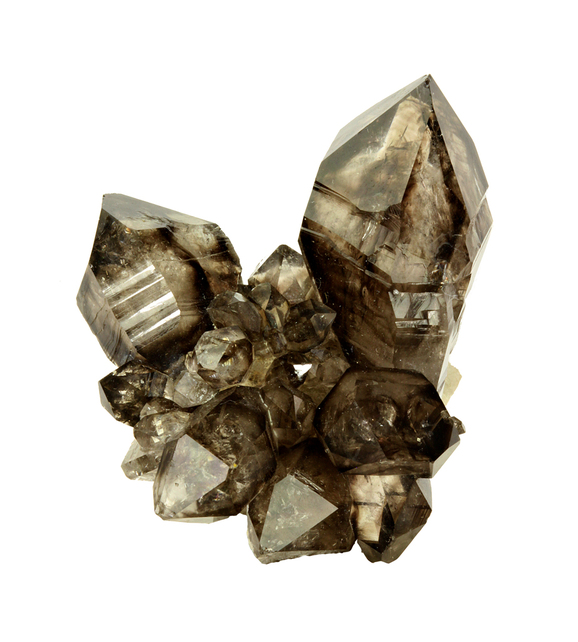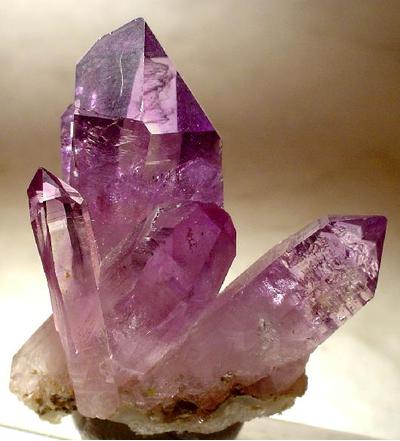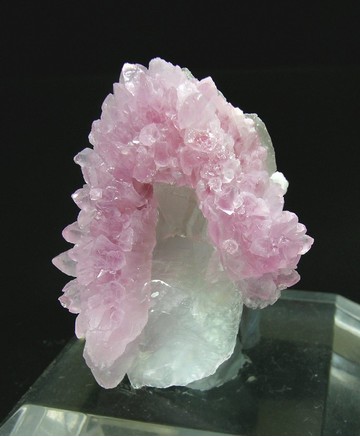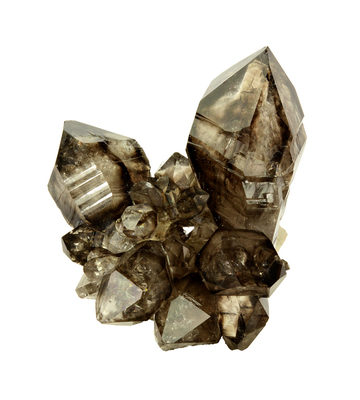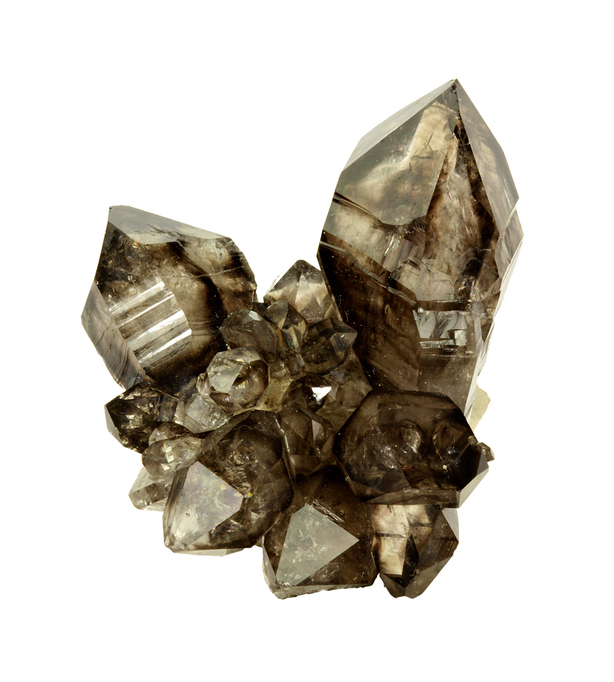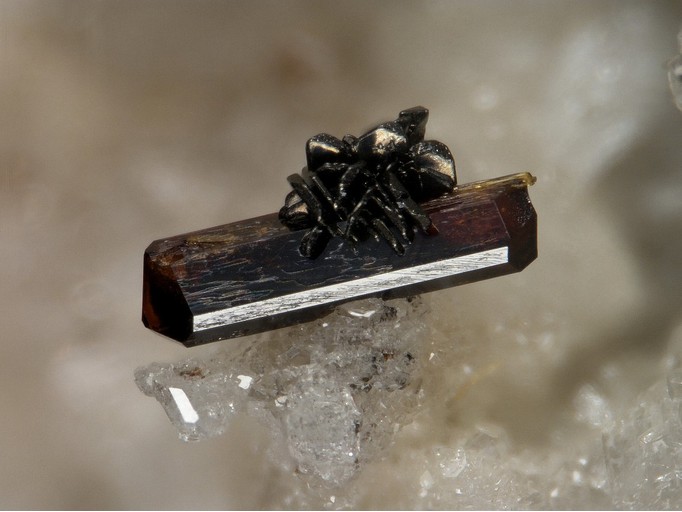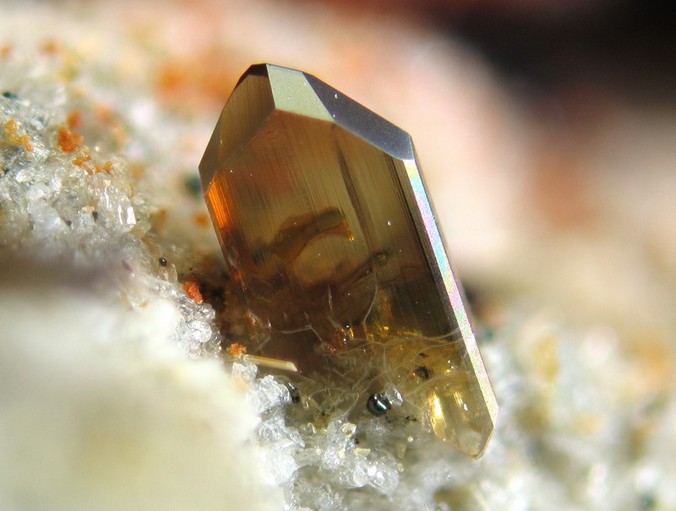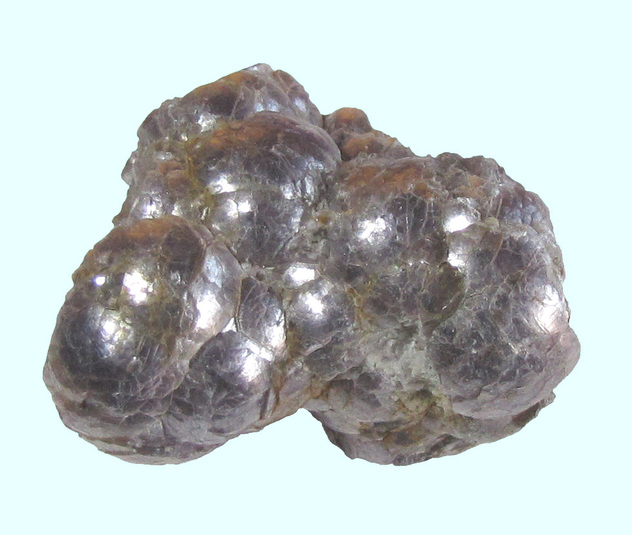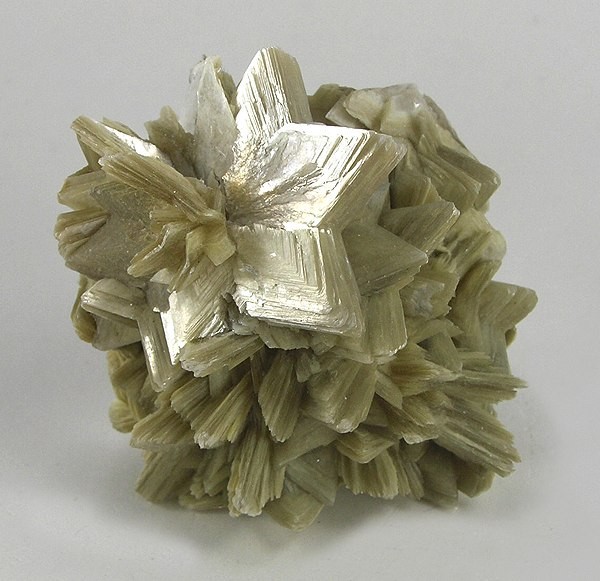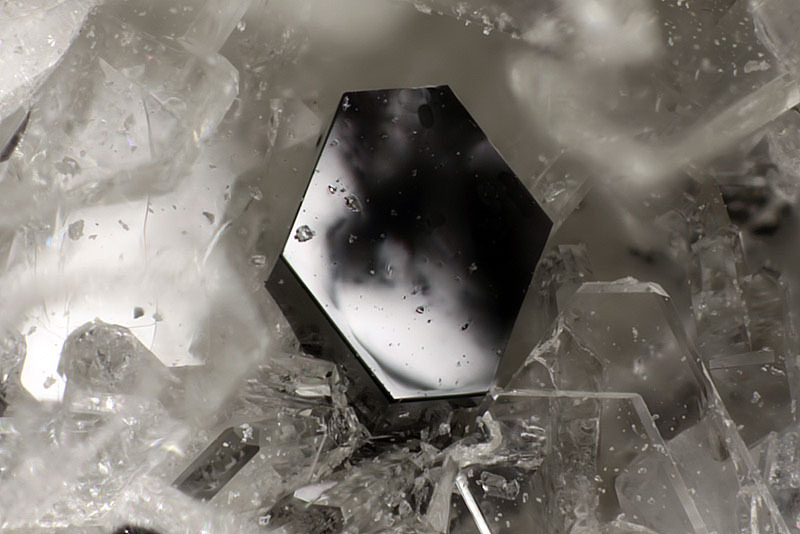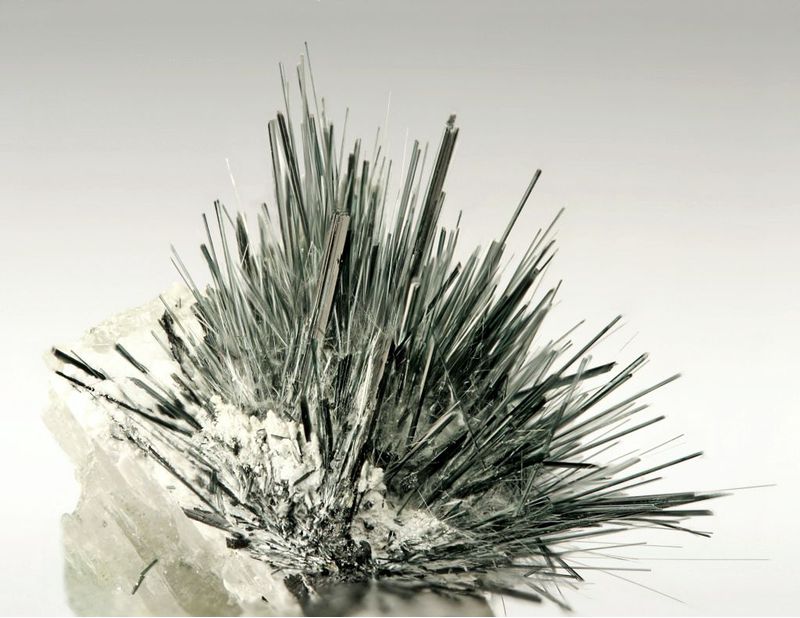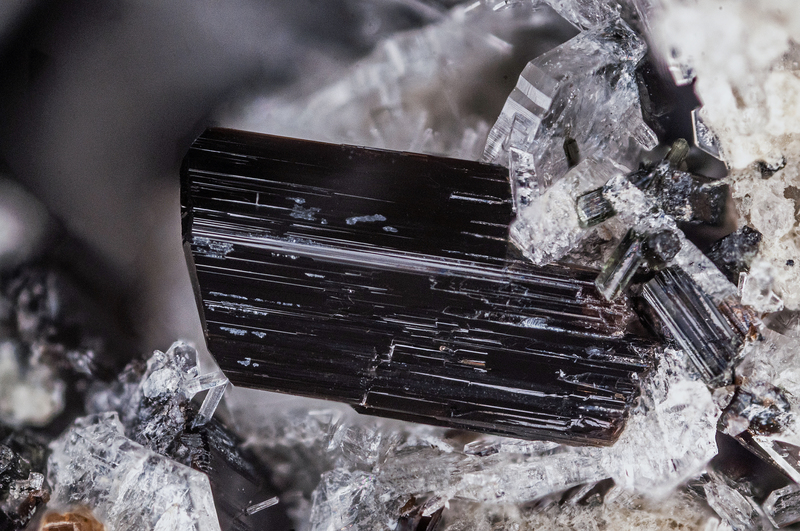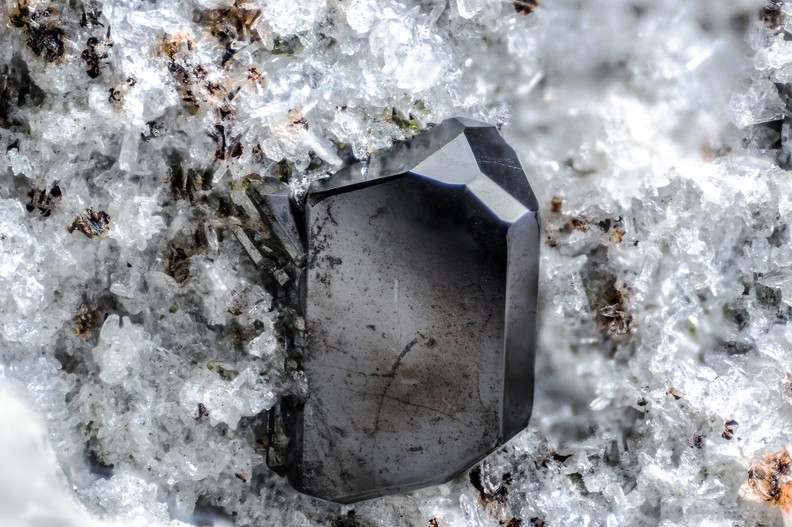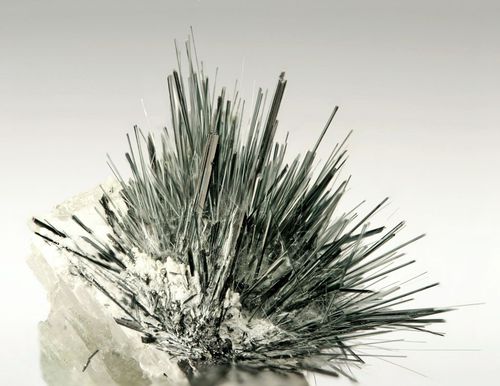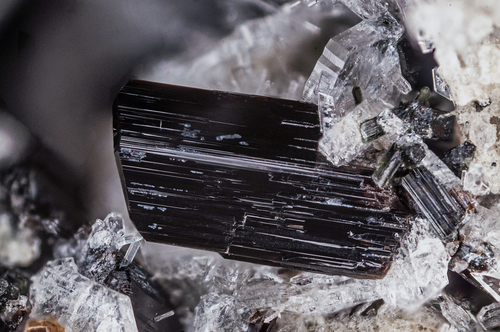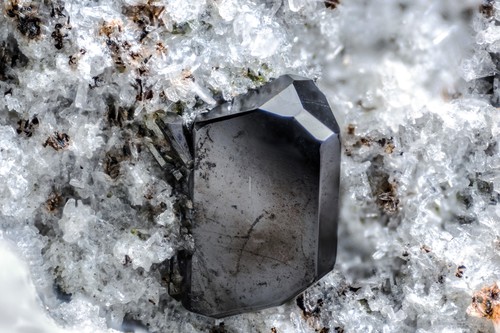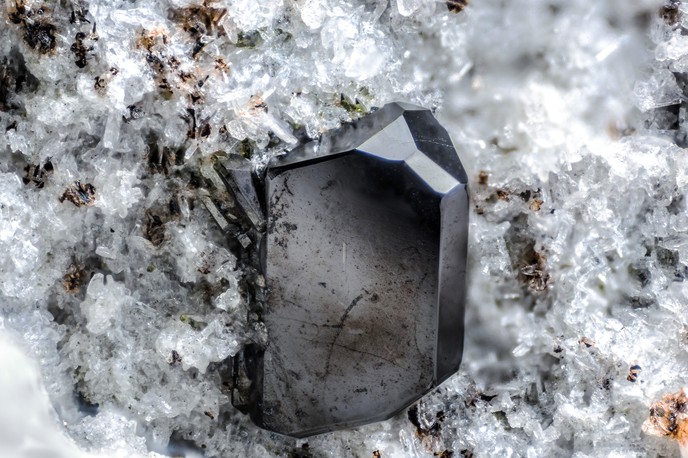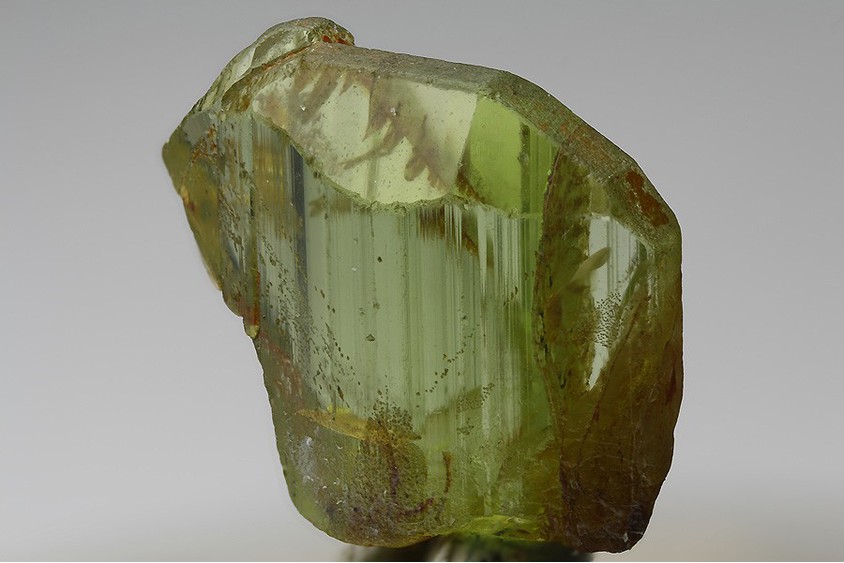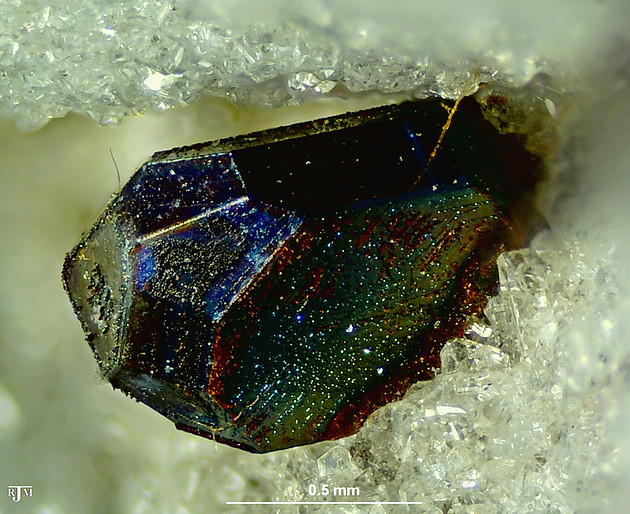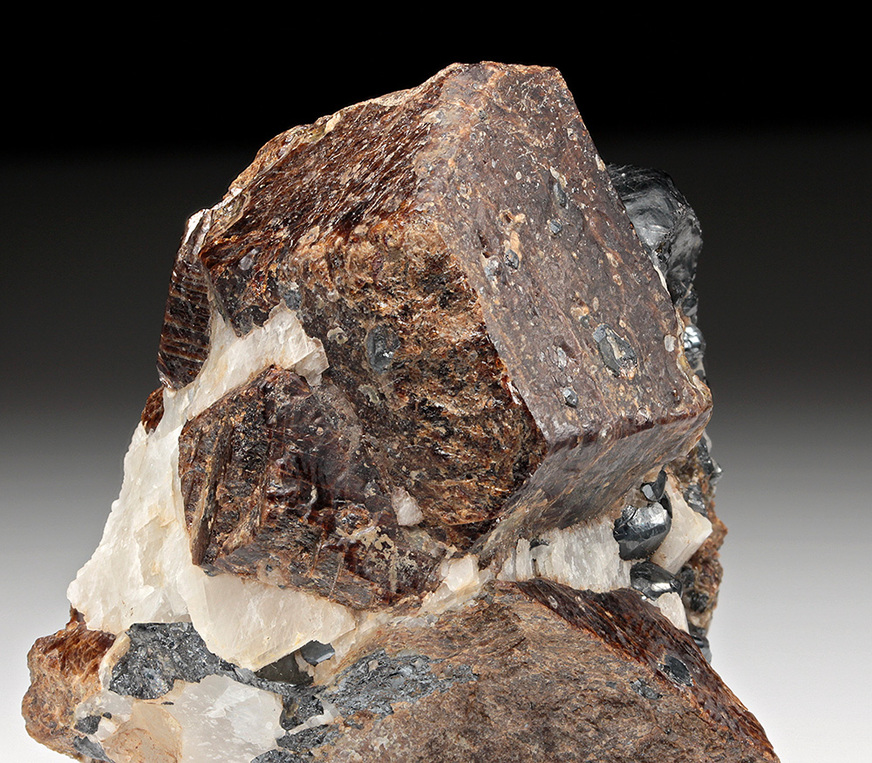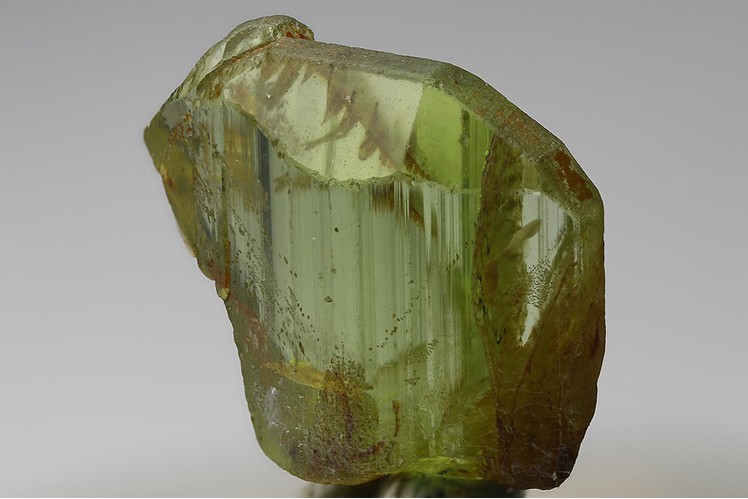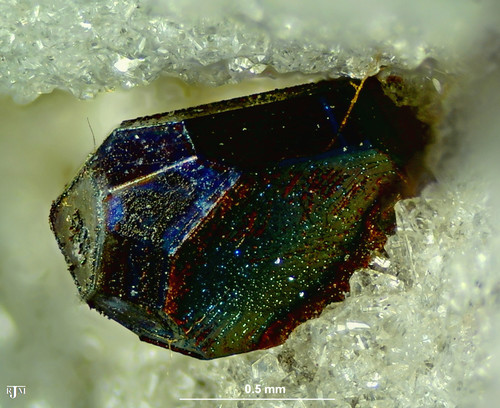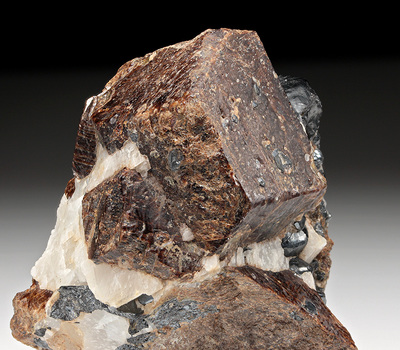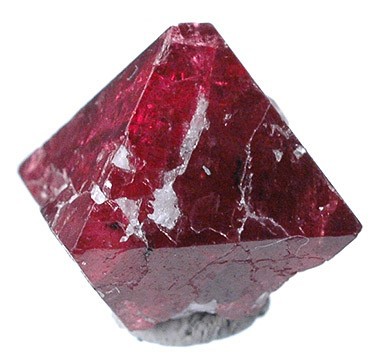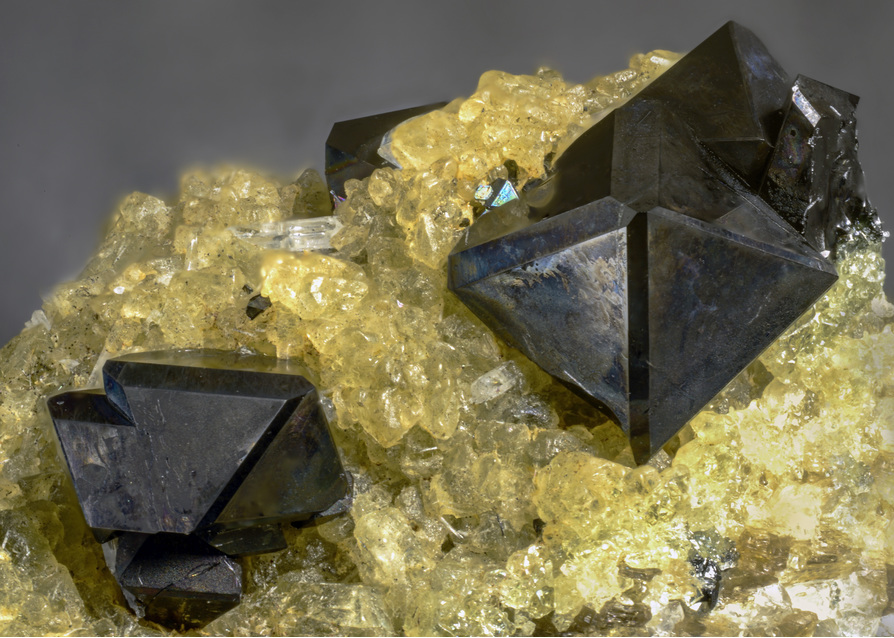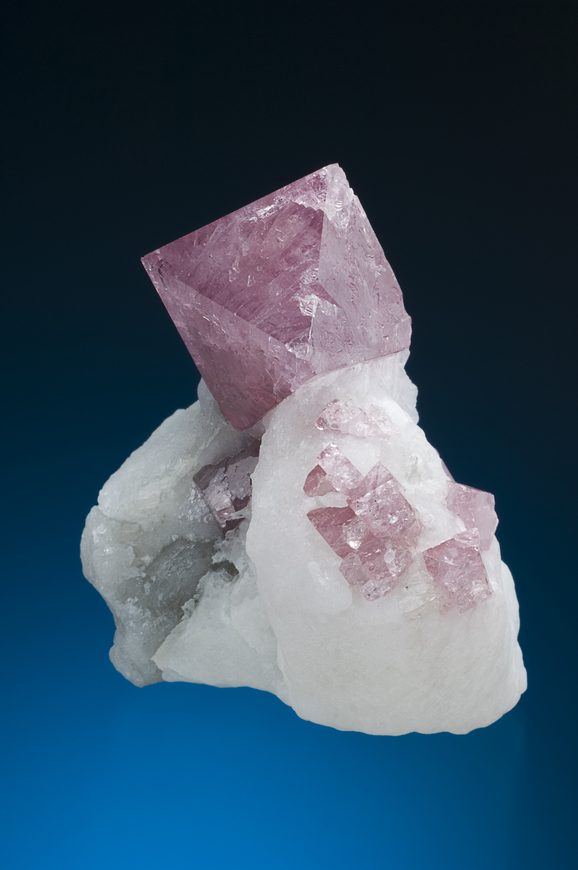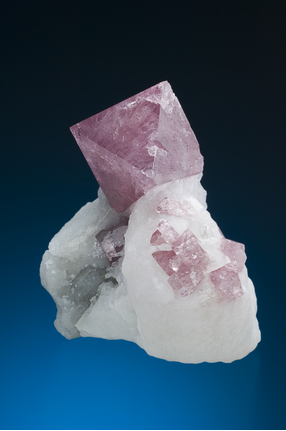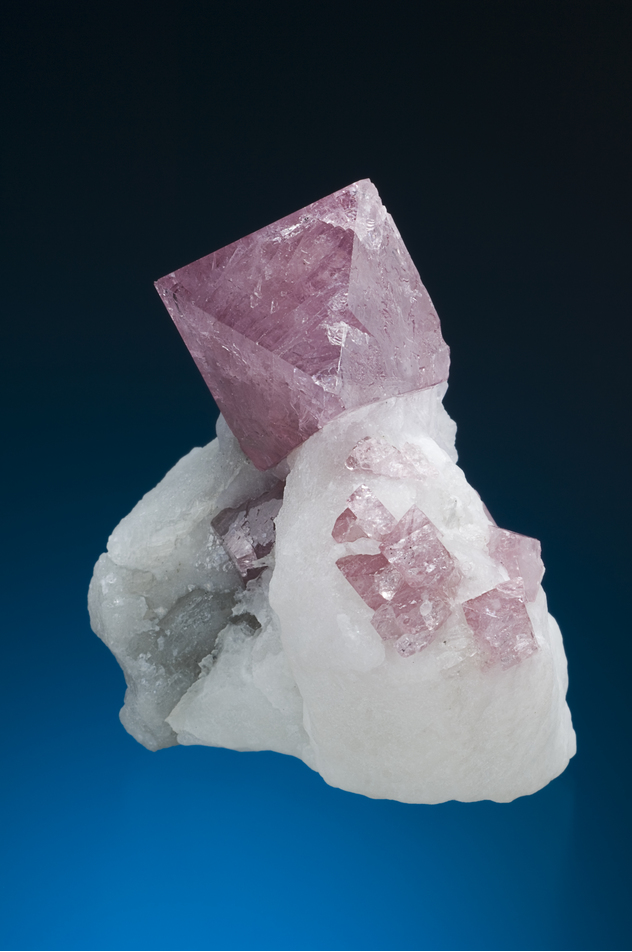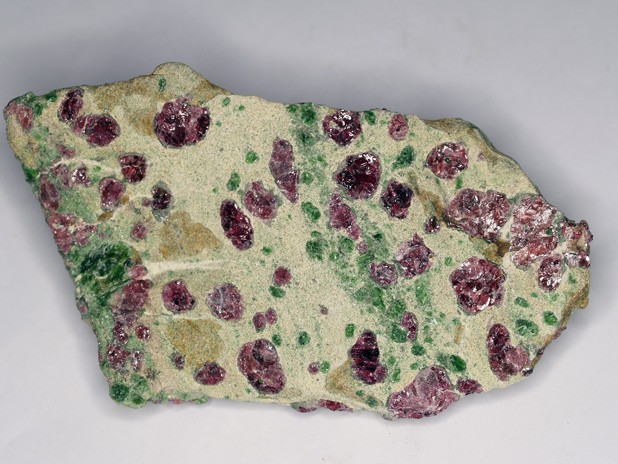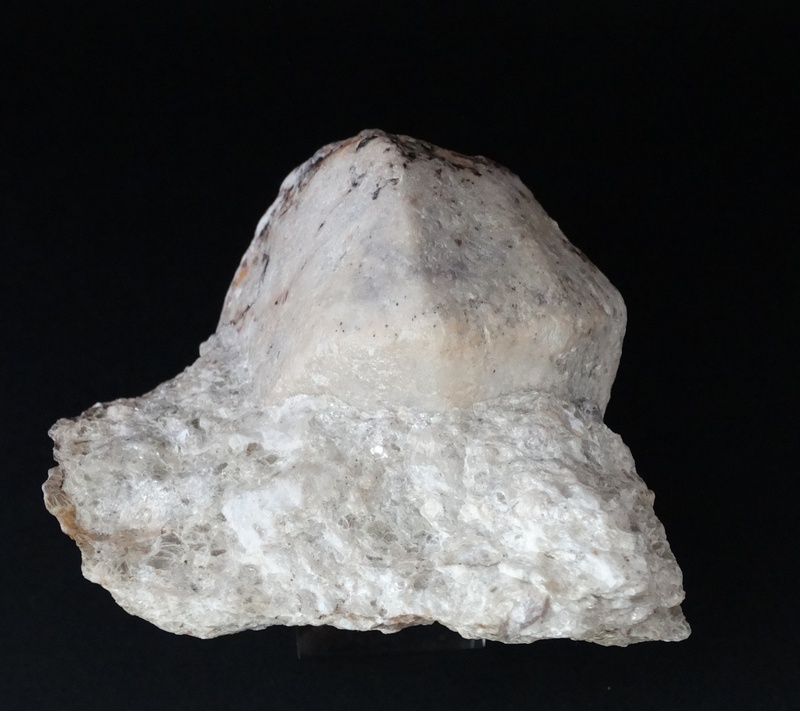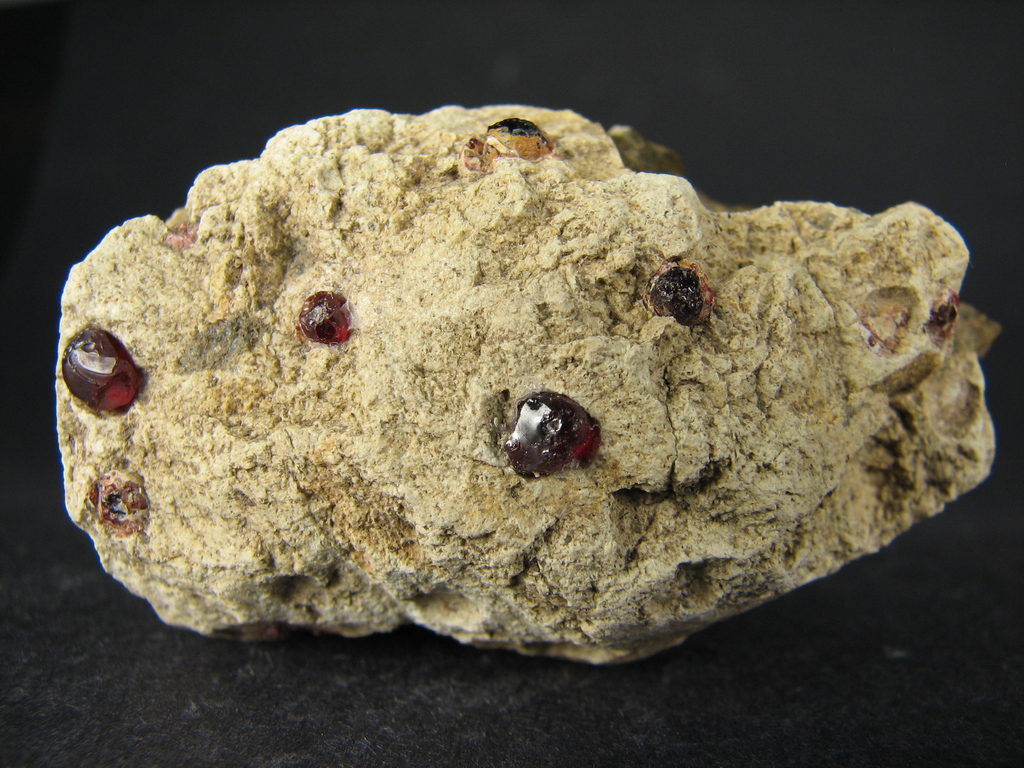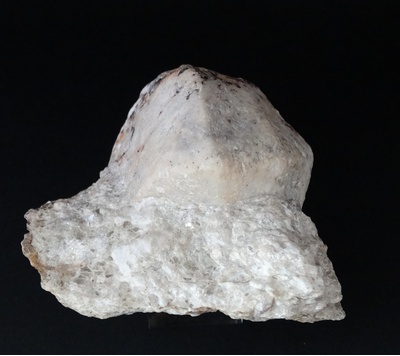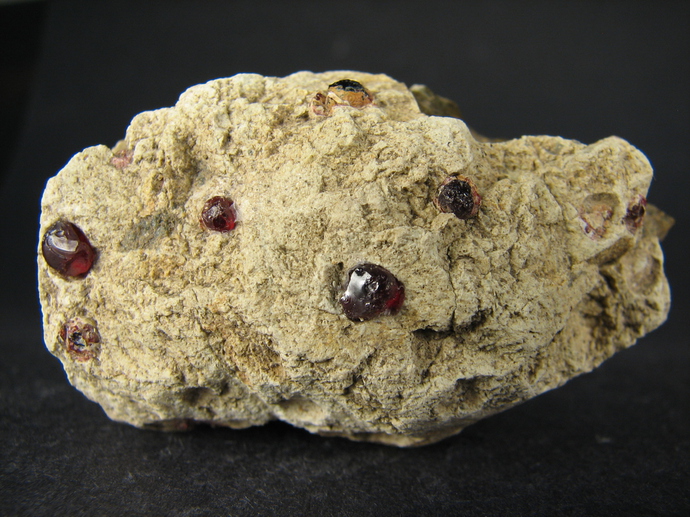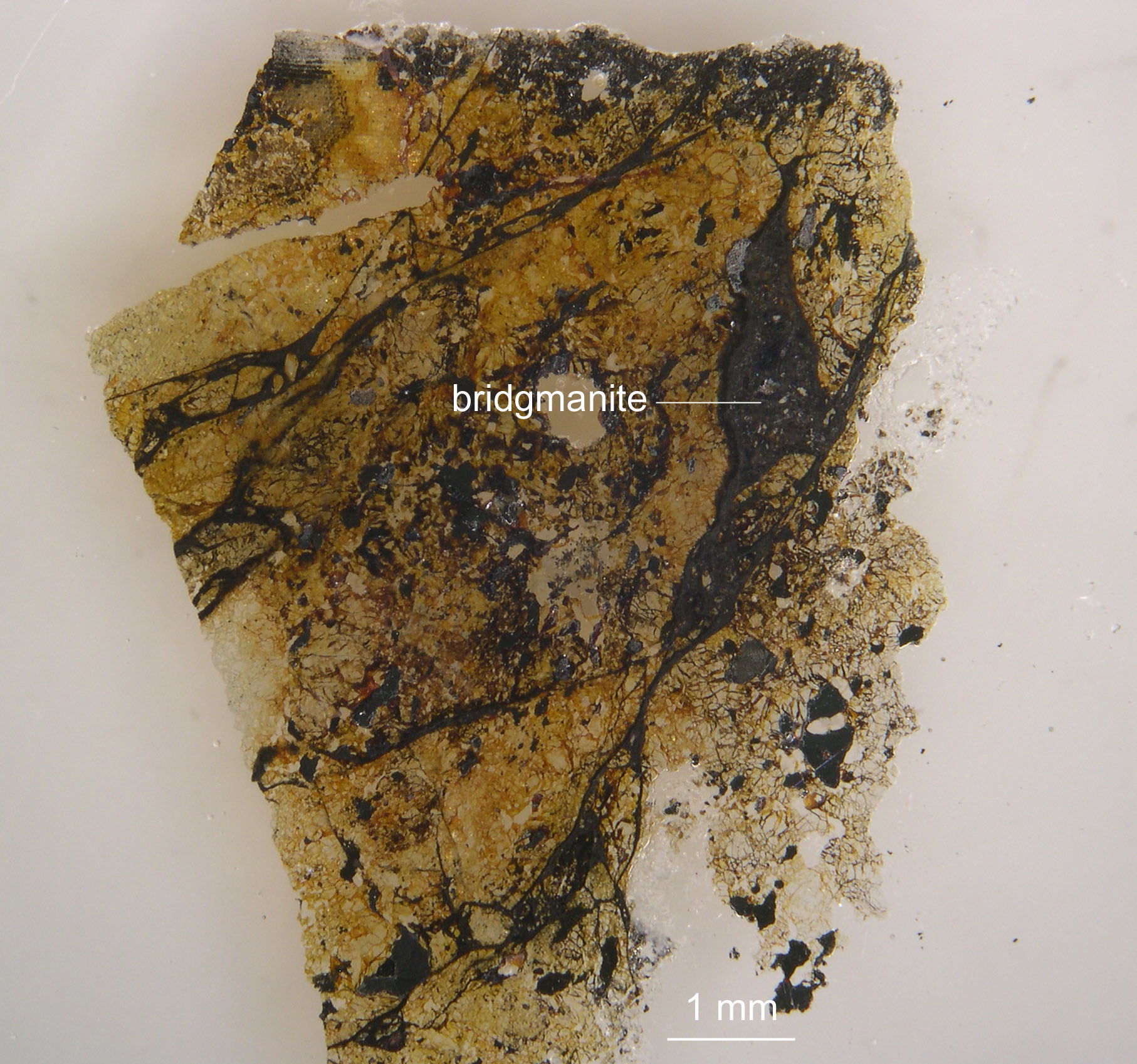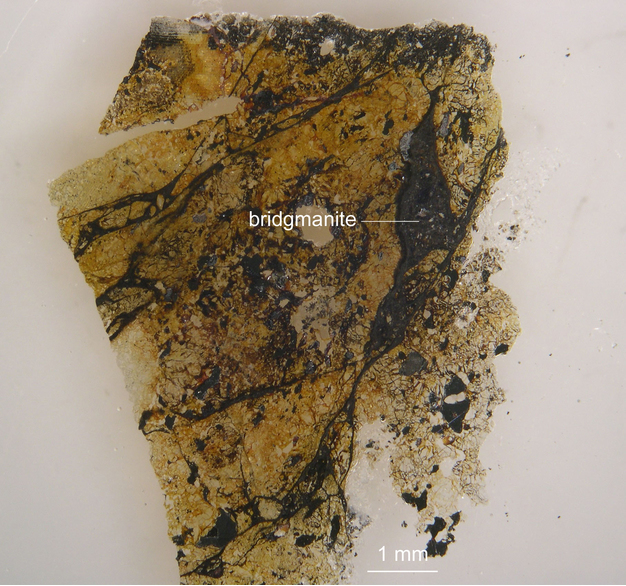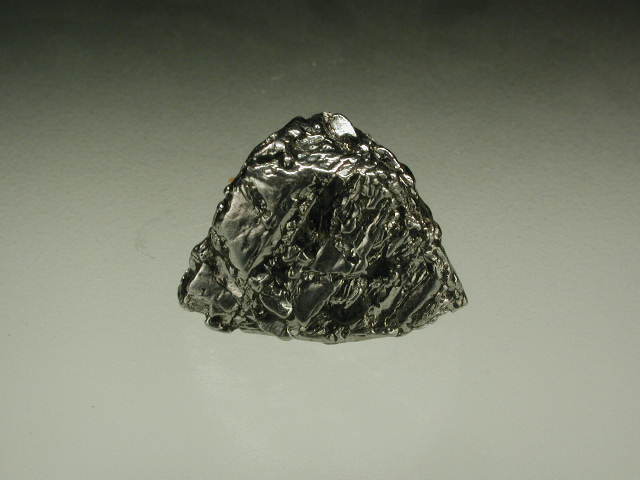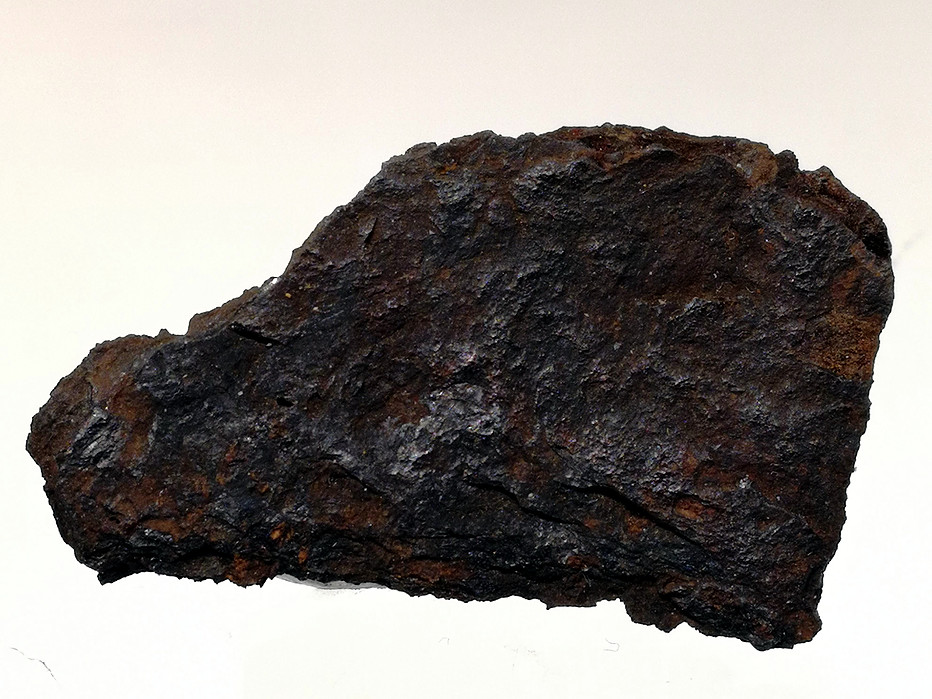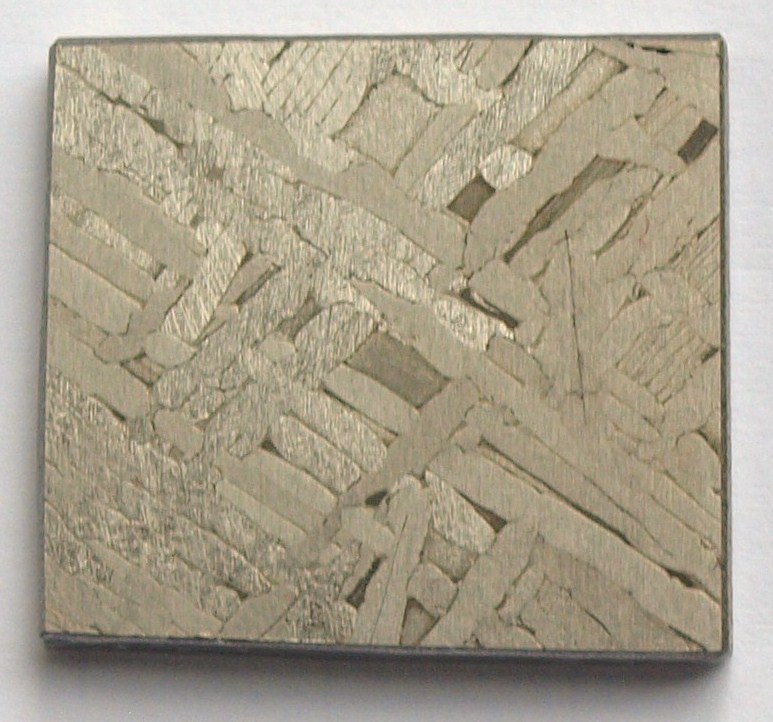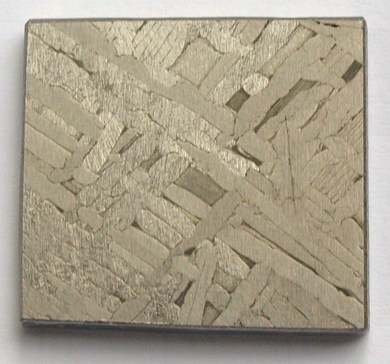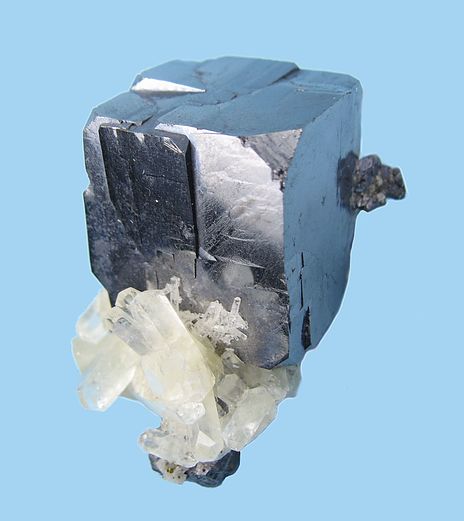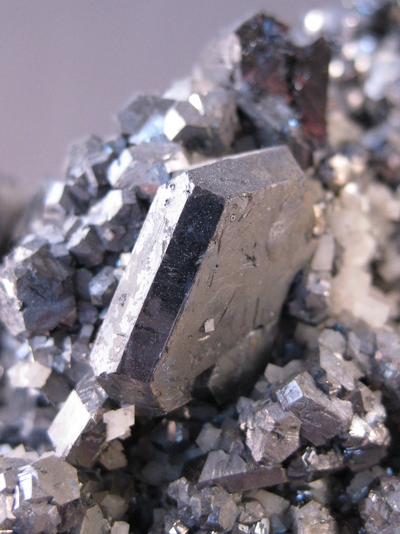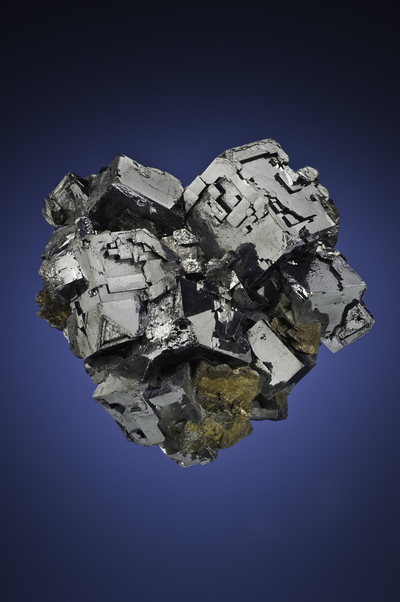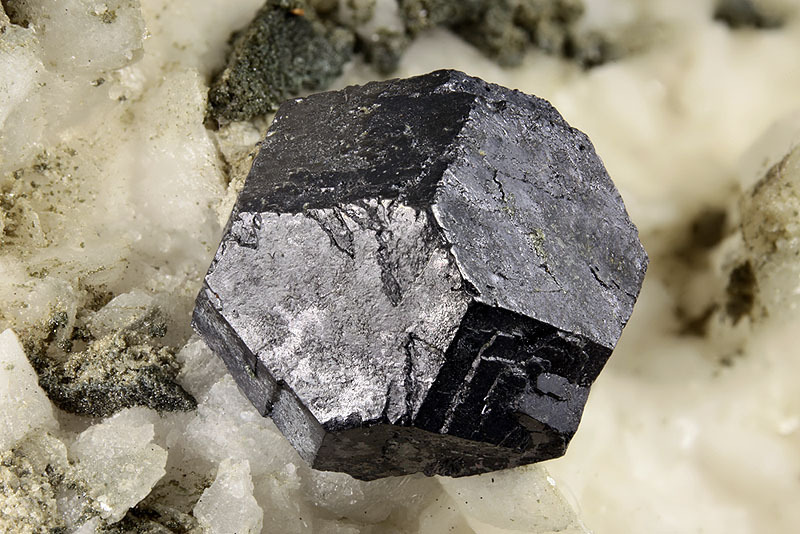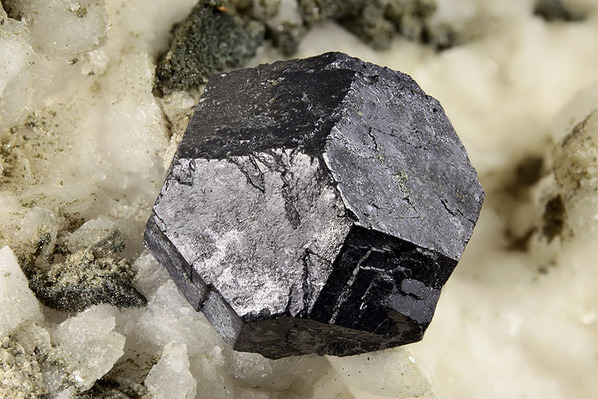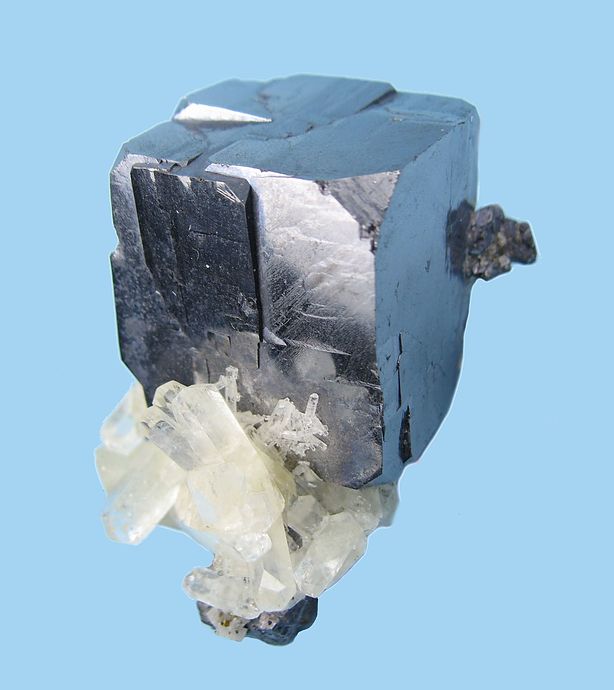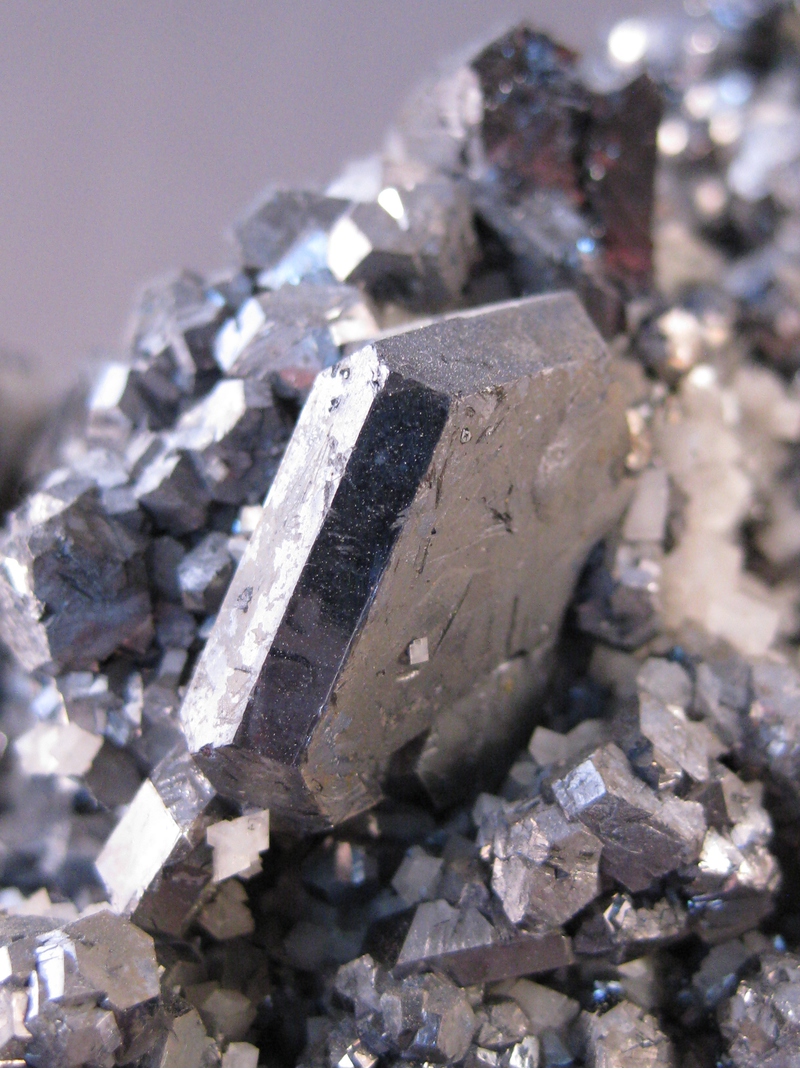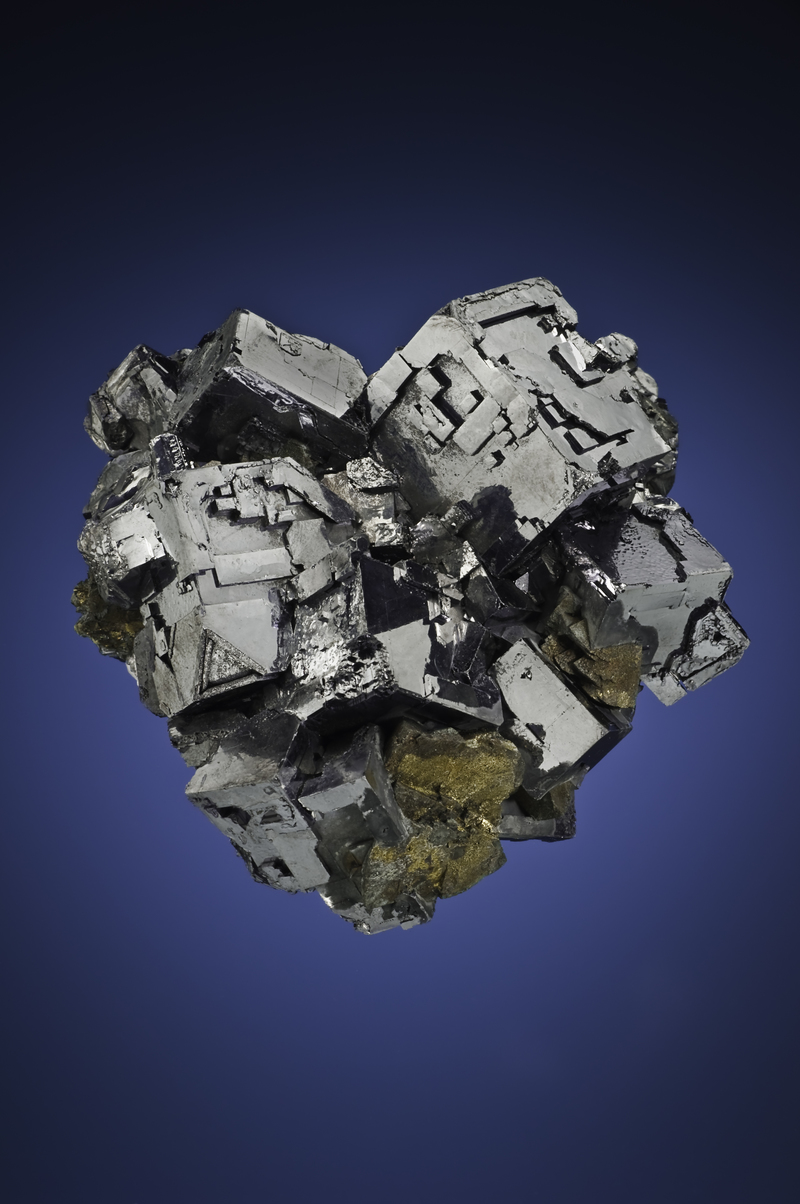The Most Common Minerals on the Earth
Last Updated: 26th Dec 2023By Jolyon Ralph
There are currently nearly 5000 minerals known to science, but only a few dozen are common enough to be found widespread throughout the Earth's crust. This article will explain a little bit about some of the most common minerals on the Earth and where the come from.
Inside the Earth
When we talk about the minerals found on the Earth we are talking about those that are found in the Earth's crust, the only part of the Earth really open for us to explore. The crust is a thin layer (up to 100km thick) under which lies the mantle and the upper (liquid) and lower (solid) core.
The Elements
All minerals are made up of a mixture of the 90 naturally occurring elements, and it comes as no surprise that the most common minerals are those that contain the most abundant elements in the Earth's crust.
Table 1. Abundance of elements in the crust | |||||||||||||||||||||||||||||||||||||||
|
The Minerals
Let's look at some of the most abundant minerals on Earth. Note that the photographs we show are often of exceptionally good crystals and not the form that average specimens of the minerals would appear to be - most rock-forming minerals are simply interlocking grains of a few mm maximum size, these photos show the potential of what these minerals can look like in the rare cases where conditions allow them to grow bigger and more perfect crystals.
The most common mineral in the crust is feldspar according to most references, with up to 52% of the crust being made up of feldspar. But feldspar is actually a group name for several related minerals - so we'll look a little at a couple of examples:
Plagioclase
(Na,Ca)[(Si,Al)AlSi2]O8
Plagioclase is a term for the sodium and calcium-rich feldspar minerals. Anorthite is a calcium-rich feldspar. The sodium-rich feldspar is albite. Many feldspars are of a composition between the two containing both sodium and calcium. These all together make up 39% of the Earth's crust.
K Feldspar
Orthoclase and microcline are the two most common minerals classified as K-feldspar. These contain potassium. 12% of the Earth's crust is made up of these K-feldspars.
Hardness:7
Quartz
SiO2
Quartz is an extremely common mineral (12% of the Earth's crust) because it is simply silicon and oxygen - the two most common elements in the crust. Quartz is hard and more resistant to chemical weathering than many other minerals, so it is a major constituent of sedimentary rocks derived from the erosion of older rock.
Pyroxene
ADSi2O6
The pyroxene group are a related group of minerals sharing the same structure - parallel chains of silica tetrahedra. Common pyroxene group minerals are augite, enstatite, hedenbergite, ferrosilite and diopside. Between them the pyroxene group make up 11% of the Earth's crust.
Mica
The mica group of sheet silicates make up another 5% of the crust. There are many different minerals within the mica group, common mica minerals are phlogopite, muscovite and biotite (although the latter is a group name for several dark mica minerals). The silica tetrahedra form parallel sheets, and mica minerals are all hydrous (contain water).
Amphibole
AB2C5((Si,Al,Ti)8O22)(OH,F,Cl,O)2
The amphibole group also make up 5% of the crust, these, like the pyroxenes, are chain silicates (inosilicates), but unlike the pyroxene group these contain a double chain of silica tetrahedra. The amphibole group (known as a 'supergroup' on mindat because of its complexity) contains a large number of slightly different but structurally similar minerals.
Clay minerals make up 5% (mostly in as ultra-fine particles in sedimentary rocks). After this we have 3% for every other silicate mineral, and only 8% for non-silicates (including carbonates such as calcite and dolomite, oxides such as magnetite and sulfides such as pyrite and pyrrhotite.
Below the crust
The mantle is around 2,900km thick, or about 46% of the Earth's radius, but represents 87% of the total volume of the Earth.
Although the mantle is only 5km below the surface at the crust's thinnest point the challenges in drilling through the crust to reach the mantle are immense (not least because the crust is only this thin in the deepest parts of the ocean.)
But we can deduce a lot about the minerals that make up the mantle from examining fragments of these mantle rocks that are brought up from very deep by volcanoes and from the careful study of seismic data which allows us to understand some of the structure of rocks buried beneath the crust. Computer models can also predict the temperature, pressure and chemistry at various depths in the Earth and from this we can deduce the types of minerals likely to be present.
Here are some of the other major minerals that are thought to make up the mantle:
Olivine Group
M2SiO4
We know that olivine is present in considerable amounts in the mantle as many fragments of rock containing olivine are brought up in lavas from deep-seated volcanoes. As with many of the silicate minerals, olivine is actually a group consisting of minerals such as forsterite and fayalite.
Hardness:7½ - 8
Spinel
MgAl2O4
Plagioclase feldspar is the primary aluminous mineral found in the upper mantle above 30km, but between 30 and 60km this is substituted for spinel.
Hardness:7 - 7½
Pyrope
Mg3Al2(SiO4)3
Below 60km, the aluminous phase in the mantle is pyrope, a member of the garnet group of minerals.
Bridgmanite
(Mg,Fe)SiO3
But the most common mineral in the earth as a whole is a high-pressure form of olivine called bridgmanite - formed with a distinct structure and not found at all in the Earth's crust. It's formed below 660km deep in the mantle so is found too deep to be transported back up to the surface in volcanic activity. However, samples of this mineral have been found in meteorites.
The Core
We know less about the core than any other part of the Earth not just because it is so remote but because the immense temperature/pressure found there are almost impossible to reproduce in laboratory experiments. We do know that the core is made up primarily of iron and nickel but also containing heavy elements such as gold and platinum in much greater concentrations than the crust. The outer core is liquid, but the inner core is solid. We can't ever take samples of the iron-nickel alloy from the inner core but we do believe the composition to be quite similar to that found in some metallic meteorites.
Hardness:5 - 5½
Taenite
(Fe,Ni)
Taenite is the mineral name given to a mixture (alloy) of iron and nickel found in meteorites and some terrestrial rocks. It is quite likely that the core consists of material at a similar composition, but because of the incredible pressure and temperature it is likely to be in a different crystallographic form than taenite. Some scientists have proposed that because of the immense pressure the core may even be a single huge crystal of iron-nickel.
References
Article has been viewed at least 172373 times.
